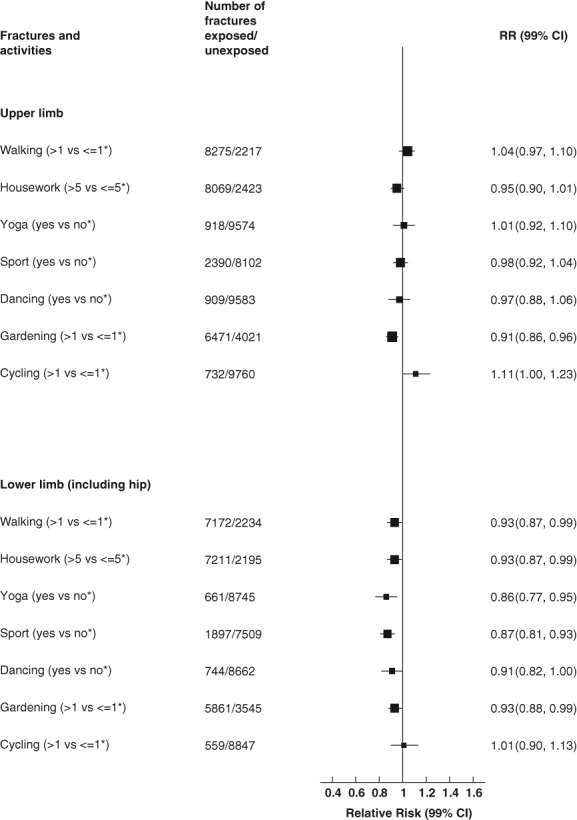Figure 1.

Associations between specific physical activities and upper limb and lower limb (including hip) fractures. *Reference category. Stratified by year of birth and study baseline year, adjusted for attained age, region, deprivation, educational qualifications, height, smoking, alcohol, BMI, menopausal hormone therapy, time spent sleeping, self‐reported history of fracture, osteoporosis, blood clots, osteoid/rheumatoid arthritis, thyroid disease, and diabetes, and mutually adjusted for other activities. Analyses were restricted to women reporting they were in good or excellent health. Women were excluded if they had a hospital record of fracture, stroke, MI, or cancer prior to study baseline, if they self‐reported stroke or heart disease prior to study baseline, or if they were missing information on physical activities of interest or BMI. CI = confidence interval; MI = myocardial infarction; RR = relative risk.
